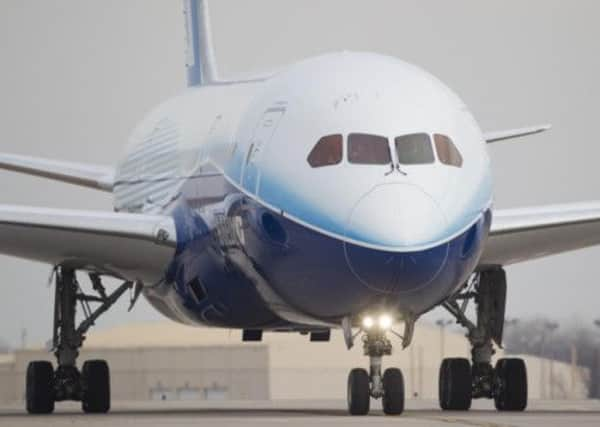April could see Boeing’s Dreamliner jets take to skies again after glitch


“The gaps between cells will be bigger. I think that’s why there was overheating,” said the source, who declined to be identified because the plans are private.
The 50 Dreamliners in commercial service were grounded worldwide last month after a series of battery-related incidents including a fire on board a parked plane in the United States and an in-flight problem on another jet in Japan.
Advertisement
Hide AdAdvertisement
Hide AdUntil the Dreamliner is cleared to fly again, Boeing will be starved of delivery payments.
The logical solution for Boeing would be to install ceramic plates between each cell and add a vent to the battery box, Kiyoshi Kanamura, a professor at Tokyo Metropolitan University who has conducted research with several Japanese battery makers, said.
Earlier yesterday, the chairman of state-run Air India said Boeing is hopeful of getting the Dreamliner back in service by early April. “They said that these planes should start flying again from early April. They can’t be sure but they are hopeful,” Rohit Nandan said.
Air India has six Dreamliners and has ordered 21 more. The question of the airline seeking compensation from Boeing for the jet’s glitches would be taken up once the aircraft are flying again, Nandan said.
Advertisement
Hide AdAdvertisement
Hide Ad“Good progress is being made,” a Boeing spokesman in Seattle said in response to questions about a possible flight restart in April. “We have been in close communication with our customers since this issue arose. The details of our conversations with customers are confidential,” he added.
Spokesmen for Japan’s All Nippon Airways, which has the biggest fleet of Dreamliners, and Japan Airlines said they were unaware of the suggested April schedule.
ANA and JAL have been most affected because they own around half of the lightweight, fuel-efficient jetliners in operation as a strategic move to win market share from their US and European rivals.